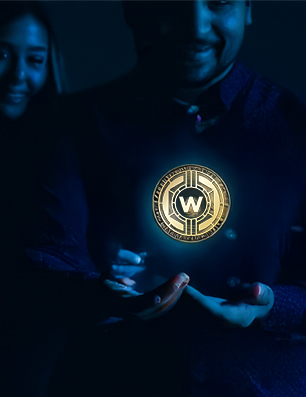- Written by: Tunbosun Oyinloye
- Sat, 22 Oct 2022
- United States
Cross-chain bridges are important in developing an interoperable, open, and decentralized blockchain space. Continue reading 8 Best Cross-Chain Bridges That Connect Multiple Blockchains at DailyCoin.com.
8 Best Cross-Chain Bridges That Connect Multiple Blockchains
The blockchain ecosystem continues to expand daily and new ways of getting it to do more things for investors only broaden. In the past, not many cared much or at all about using other blockchains, as developers and users would likely use Ethereum for dApps or Bitcoin for high-value transfers.
However, the disadvantages of these well-known blockchains, like Ethereum, pushed the development of newer platforms. These new chains, called “blockchain bridges,” offer benefits like cheaper transaction fees, higher network throughput, and access to innovative yield-earning activities.
Interestingly, there are more than 125 blockchains, and they cannot communicate with each other. Each blockchain is a self-contained “silo” with no entry or exit. Hence the most effective way to get a token or coin, for example, Bitcoin, from one blockchain to another is by using a bridge, also called a cross-chain bridge.
Cross-chain bridges can be designed to interchange any sort of data, including smart contract calls, decentralized identities, off-chain information like stock market price feeds, and much more. Additionally, they make it easier to use a decentralized application (dApp) across different blockchains. There are quite a few cross-chain bridges out there, but in this piece, you’ll get to know the top eight that offer the best security, support options, and more.
8. Multichain Bridge
Multichain bridge, formerly known as Fantom Anyswap, is a cross-chain router protocol enabling the flow of data and assets across different blockchain networks. No other cross-chain bridge service supports as many token types as Multichain.
The bridge supports blockchain networks such as Arbitrum, Astar Network, Avalanche, BNB Chain, Bitcoin, Blocknet, Boba Network, Celo, Clover, ColossusXT, Optimism, Polygon, REI, Shiden Network, Syscoin NEVM, Telos, Terra, Velas, and others. Users can use the Multichain bridge to transfer assets between any two supported chains.
Multichain bridge transfers a minimum amount of 12 USDT and a maximum of 20,000,000 USDT. Its processing time is approx. 10-30 min, and the cross-chain fee is 0.01%.
7. Arbitrum Bridge
Launched in 2021 by Off-Chain Labs, Arbitrum is a Layer 2 (L2) solution for Ethereum’s congested network. Arbitrum was built as a scaling solution to streamline transactions on Ethereum’s Layer 1 (L1) blockchain. Some of the biggest players in the DeFi space, like Uniswap, Curve, and SushiSwap immediately jumped on the Arbitrum bandwagon to capitalize on its benefits, coupled with Ethereum’s security.
Arbitrum uses the concept of optimistic rollups to offer lower gas fees for secure transactions. Optimistic rollups are smart contracts that “roll up” off-chain transactions into bundles. This spreads the costs of the bundled transactions, resulting in lower gas fees and reduced network congestion while maintaining high-security standards.
The bridge supports YFI, USDT, ETH, WETH, Ethereum Assets, UNI, SUSHI, CRV, USDC, COMP, Dai, and WBTC. However, to bridge your ETH assets, you’ll first need to connect the Arbitrum Bridge with a crypto wallet. The bridge has a total value locked (TVL) of over 1 billion as of the time of writing.
6. Polygon Bridge
The Polygon Bridge lets users quickly transfer ERC tokens and NFTs to the Polygon sidechain. There are two primary bridges on Polygon, the Proof of Stake (PoS) Bridge and the Plasma Bridge. Both can bridge assets from Ethereum to Polygon (and vice versa), but they adopt different security methods.
The PoS Bridge uses the Proof of Stake (PoS) consensus algorithm to secure its network. It supports the transfer of Ether (ETH) and most ERC tokens. The Plasma Bridge is for devs that need increased security. It uses the Ethereum Plasma scaling solution and supports the transfer of MATIC, ETH, ERC-20, and ERC-721 tokens.
One of the main benefits of the Polygon bridge is the low gas fees. Transactions also process faster with no third-party protocols involved, and it’s completely decentralized. Users will incur Polygon bridge fees, though they’re a lot lower than if you would use the Mainnet. The Bridge already has a total value locked (TVL) of over 2 billion as of the time of writing.
5. Synapse Bridge
Synapse bridge is a layer-decentralized protocol that aims to facilitate cross-chain interoperability within DeFi. The protocol consists of two core components: the Synapse Bridge and the Synapse AMM.
Synapse connects blockchains by offering an extensible cross-chain messaging protocol that supports assets, smart contract calls, and more. Synapse’s cross-chain bridge allows for the frictionless transfer of crypto assets across multiple blockchain networks, including Arbitrum, Avalanche, Boba, Binance Smart Chain, Ethereum, Fantom, Harmony, and Polygon.
Users can also seamlessly cross-chain swap between stablecoin assets on blockchain networks. This cross-chain bridge infrastructure is powered by multi-party computation validators who secure the bridge and react to events on blockchain networks connected by Synapse. Although in its nascent stage, the Bridge has a total value locked (TVL) of over 60 million as of the time of writing.
4. Tezos Wrap Protocol Bridge
Developed by the DeFi development firm Bender Labs, the Wrap Protocol is a permissionless, decentralized, bi-directional bridge between the Ethereum and Tezos networks. The protocol permits users to wrap their ERC-20 into FA2 tokens that can be used within the Tezos ecosystem. Using the wrap protocol, holders of ERC-20 tokens can benefit from high network speeds, affordable transaction costs, and the scalability of Tezos.
The protocol also supports the wrapping of ERC-721 tokens. This means that users can easily move their NFTs between the two networks. Wrap also aids in bringing cross-chain assets onto the Tezos network and also creates new use cases for these wrapped tokens. They can be used for yield farming and to provide liquidity to wToken/XTZ pairs.
That being said, users have an opportunity to earn a share of the wrapping and unwrapping fees collected by the protocol. The $WRAP token, which is both an ERC-20 and FA2 token, powers the Wrap Protocol Bridge.
Furthermore, there is a 0.15% fee for wrapping and unwrapping tokens. This fee is paid in the w-Token of the asset you are bridging and can be earned by holders of the WRAP governance token by staking their WRAP on the pool of a supported token. Wrap has a total value locked (TVL) of over 2 million as of the time of writing.
3. Portal Token Bridge (formerly Wormhole)
Portal Token Bridge is one of the most popular cross-chain bridges in the industry. This decentralized bridge was originally built on the Solana Network for bi-directional crypto token transfers between Solana and Ethereum.
However, Portal has since scaled into a multichain network that connects seven leading DeFi blockchains, including Solana, Ethereum, BSC, Polygon, Terra, Avalanche, and Oasis, which account for 88% of the DeFi industry.
Portal employs special validator nodes called Guardians to provide users with the best cross-chain swap experience. Guardians monitor the activity on the bridge and verify user requests.
Portal Token Bridge makes itself different from the rest due to its extremely low transaction fees of $0.0001 per transfer and its beginner-friendly interface. The bridge has a total value locked (TVL) of 177 million and has processed over $400K in transactions as of the time of writing.
2. Avalanche Bridge
The Avalanche Bridge is a bi-directional cross-chain bridge between the Avalanche and Ethereum networks, facilitating a fluid transfer of tokens between the two networks. So, the Avax bridge replaced the Avalanche-Ethereum Bridge, or AEB, and was a great launchpad for Avalanche’s growth.
The bridge uses ChainSafe’s ChainBridge and facilitates two-way transfers of both crypto tokens and NFTs. Users who want to initiate a cross-chain swap and use ERC-20 tokens within decentralized applications on Avalanche can deposit and lock their assets in the ChainBridge Smart Contract.
According to the documentation, an Avalanche transaction on AB will take a few seconds, while an Ethereum transaction may take up to 15 minutes.
1. Binance Bridge
At the top of the list is one of the most popular choices for portability to Binance Smart Chain from Ethereum, Binance Bridge. The Ethereum-Binance Smart Chain (BSC) Bridge lets anyone convert their crypto tokens into and back from Binance Chain and BSC compatible formats.
Currently, the Binance Bridge supports the conversion of ERC-20 tokens along with a few coins on other networks, including XRP, LINK, ATOM, DOT, XTZ, and ONT.
The conversion process takes only a few minutes to bridge tokens between the networks. Moreover, the bridge charges zero transaction fees. Users are only required to pay gas on the native and destination chains.
The Bridge interface is open to any user, even without a Binance account, and is one of the most popular points of entry from Ethereum into the Binance Network.
Why You Should Care
Cross-chain bridges are important in developing an interoperable, open, and decentralized blockchain space. By promoting seamless and fluid interoperability between formerly-siloed blockchain networks, bridges allow users access to greater liquidity and security, among other key attributes.
Find out more about Binance chain bridge’s latest update:
Binance-Backed BNB Smart Chain Completes Hard Fork to Prevent Future Cross-Chain Bridge Hacks
Read more about Nervos’ latest venture into cross-chain solutions:
Nervos Launches Cross-Chain Bridge to Binance Smart Chain





